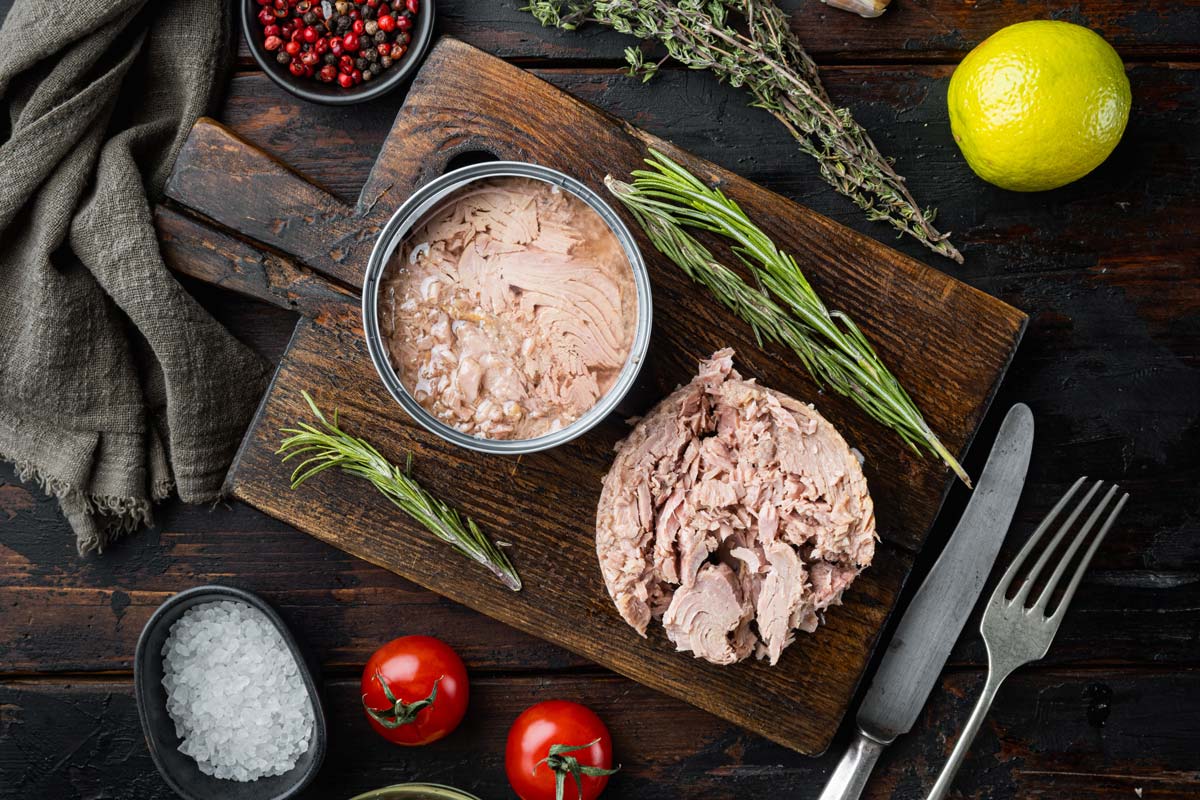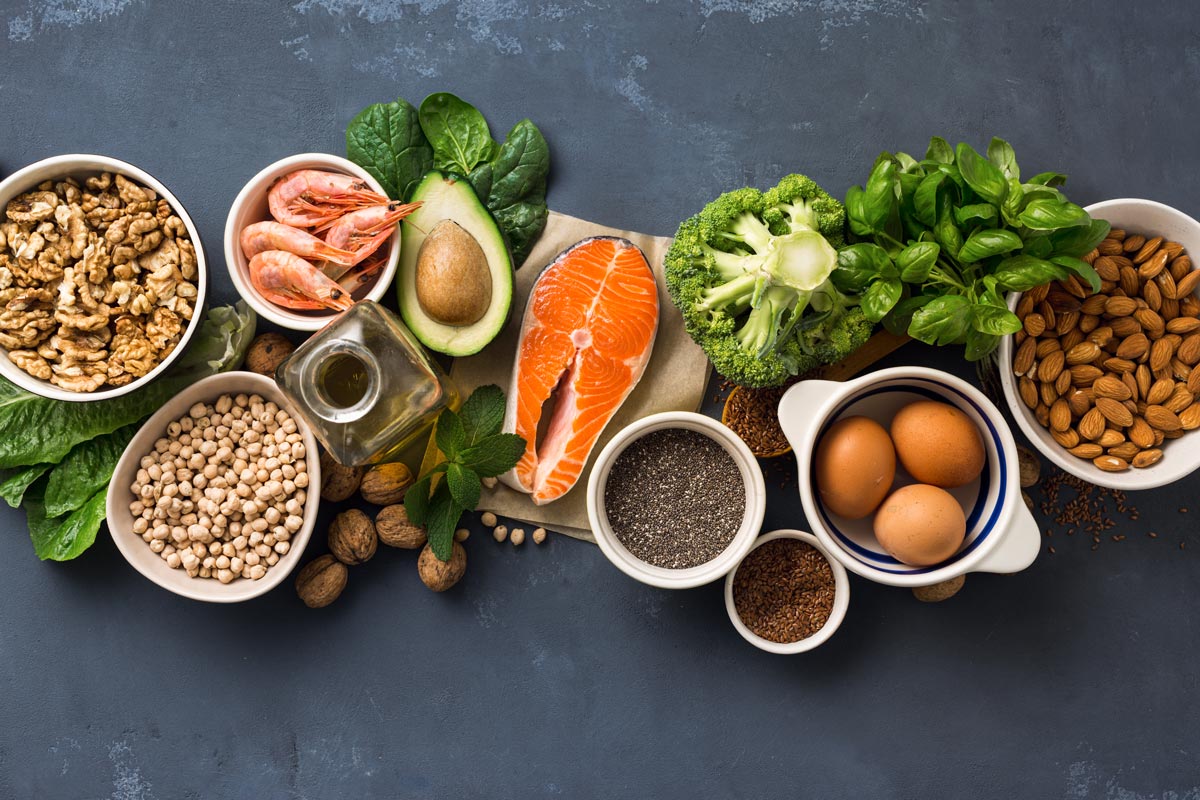Avocado Tuna Salad Recipe, Spotlight on Canned Tuna, Safer Avocado Slicing, HDL Cholesterol and Brain Health, and Moderate Exercise and Appetite
Move over avocado toast—avocado tuna salad is the new must-have dish. My recipe incorporates olive oil and cannellini beans for even more toothsome goodness. In fact, it’s loaded with ingredients that help boost good HDL cholesterol, which has many health benefits. For one, HDL may protect the brain’s gray matter, according to new research done at UT Southwestern Medical Center. I’m also sharing a finding from Murdoch University in Australia that moderate-intensity exercise may help decrease appetite in people trying to lose weight.
Avocado Tuna Salad
 Avocado Tuna Salad
Avocado Tuna SaladThis twist on tuna salad forgoes mayo for creamy, nutrient-dense avocado (the avocado should be ripe but still somewhat firm). This recipe is also great made with grilled tuna—the next time a fillet is on the dinner menu, consider making a little extra to enjoy this dish for lunch the next day.
Ingredients
- 3 tablespoons extra virgin olive oil, plus more for drizzling
- 1 tablespoon fresh lime juice
- 1 tablespoon chopped fresh flat-leaf parsley
- 1/4 teaspoon fine sea salt
- 1/2 teaspoon freshly ground black pepper
- 1 Hass avocado, cut into chunks
- One 5-ounce can chunk light tuna, drained and flaked, or the equivalent amount of grilled tuna
- 1 cup cherry tomatoes, halved
- 3/4 cup canned cannellini beans, rinsed and drained
- 2 tablespoons minced red onion
- 4 cups mixed spring greens, arugula, and/or baby spinach
Directions
Step 1
In a large bowl, whisk the olive oil and lime juice. Whisk in the parsley, salt, and pepper. Place half the avocado chunks in the bowl and mash them into the dressing. Gently fold in the rest of the chunks, the tuna, tomatoes, beans, and red onion.
Step 2
Divide the greens between two bowls and top with equal amounts of the tuna and drizzles of olive oil.
Yields 2 servings

Healthy Ingredient Spotlight
Update on Tuna

Because of its availability and low price, canned tuna is the most consumed fish in the US. But recent recalls (due to defects in the cans themselves) and concern over mercury levels in fish may have you wondering how safe it is to eat tuna and how often.
The type of tuna matters. When Consumer Reports (CR) analyzed popular brands, their scientists found that chunk light and skipjack tuna have roughly a third of the mercury found in albacore, with some even greater variations by brand. Bumble Bee, Chicken of the Sea, StarKist, and Safe Catch Wild Elite had the lowest amounts of mercury and were deemed safe to eat up to three times a week, compared with albacore that on average should be limited to once a week.
Where the tuna was caught matters too. CR reported that “experts who study mercury contamination in fish have found that levels of it in different oceans appear to be linked to different practices and policies in the nations nearby. For instance, mercury contamination in tuna caught in the Pacific Ocean is on the rise, but levels are dropping in tuna from the Atlantic Ocean,” said Nicholas Fisher, PhD, a distinguished professor in the School of Marine and Atmospheric Sciences at Stony Brook University in New York. “In China and India, they burn a lot of coal for electricity, and when you burn coal, you release a lot of mercury into the air, which eventually rains down; so mercury levels have been increasing somewhat in the Pacific,” Dr. Fisher added. “Whereas in the Atlantic, we’ve shown that the levels have declined a little bit, primarily because of efforts made in North America … to sort of scrub the mercury from coal-fired plants in the US and Canada.”

Quick Kitchen Nugget
Safer Avocado Slicing
You’ve probably seen chefs on TV piercing an avocado pit with the tip of a knife and then twisting it out. As impressive as this maneuver might look, it’s extremely dangerous, for fingers and the palm of your hand. According to a study published in The American Journal of Emergency Medicine, there were an estimated 50,413 avocado-related knife injuries from 1998 to 2017 in the US. An analysis of data from the US Consumer Product Safety Commission found there are roughly 24 avocado-related hospital visits per day!
There’s even a name for this common injury: avocado hand. It happens when the knife slices through the fleshy part of the avocado and into your hand or fingers. This can lead to tendon, nerve, blood vessel, or muscle injury that could permanently affect the ability to use your hand. According to experts at University of Utah Health, here’s the right way to cut an avocado and remove the pit:
- Choose a ripe avocado and place it on a cutting board.
- Use a butter knife and cut it in half lengthwise.
- Twist the avocado to pull apart the halves.
- Remove the pit by putting your index and middle finger between the pit and flesh and placing your thumb on the back to push and pop out the pit.
- Remove the flesh from the skin with a spoon.

For Your Best Health
HDL Cholesterol and Brain Health
High-density lipoprotein (HDL), or good cholesterol, may play a vital role in conserving healthy brain matter in middle-aged adults, according to the first study to investigate a potential link between HDL function and brain volume. The research was done at UT Southwestern Medical Center and published in the Journal of Clinical Medicine.
“Our study has identified a novel role of HDL cholesterol function in maintaining gray matter volume in the brain, which is important for cognitive function in middle-aged adults,” said the study’s first author, John Giacona, PhD, assistant professor of applied clinical research and internal medicine in the School of Health Professions at UT Southwestern.
The research involved 1,826 participants between the ages of 35 and 70 enrolled in the multiethnic, population-based Dallas Heart Study, a longitudinal study now in its 25th year. First, fasting lipoprotein concentrations were assessed using nuclear magnetic resonance. Participants were then tested for cognitive function, and their brain matter volume was measured using brain magnetic resonance imaging. Initial assessments took place between 2000 and 2002, and participants were reassessed between 2007 and 2009.
Professor of internal medicine in the division of cardiology Anand Rohatgi, MD, and his team at UTSW’s Clinical Heart and Vascular Center measured HDL function in this study. Their findings revealed that higher concentrations of small-particle HDL—but not larger particles or total HDL concentration—were linked with greater gray matter volume and higher cognitive capacity.

“Previous research has shown conflicting evidence regarding the concentration of HDL cholesterol in development of dementia or brain atrophy,” said senior author Wanpen Vongpatanasin, MD, professor of internal medicine and director of the hypertension section in the division of cardiology at UTSW. “However, the concentration of HDL cholesterol may not reflect their function.”
HDL decreases the amount of low-density lipoprotein LDL, or bad cholesterol, in blood vessels by transporting the excess to the liver, where it gets broken down. “In addition, HDL particles exist in many sizes, which may be linked to their function,” Dr. Vongpatanasin said. “We now need to understand exactly how the small HDL particle, which can cross the blood-brain barrier, may have a beneficial role in maintaining brain health.”
This finding led the researchers to note that HDL cholesterol function or levels of small HDL particles may be used as markers for a population at risk of developing cognitive decline, though additional studies would be required to confirm the connection.
According to the UMass Chan Medical School Center for Applied Nutrition, to increase your HDL you should increase the amount of physical activity you do, lose weight if needed, quit smoking if you smoke, and aim to increase omega-3 fatty acids in your diet with foods like fatty fish (such as light tuna, salmon, trout, and sardines), freshly ground flaxseed, walnuts, and dark, leafy greens.

Fitness Flash
Moderate Exercise and Appetite
A recent study from researchers at the Murdoch University Health Futures Institute in Australia found that moderate-intensity exercise can significantly influence appetite-related hormones and perceptions in obese men. It provides new insights into how exercise can aid appetite control and weight management.
According to one of the study authors, Timothy Fairchild, PhD, associate professor at Murdoch’s School of Allied Health, the study confirms their previous work showing the benefits of incorporating regular exercise into daily routines for individuals looking to manage their weight and improve their overall health.
“People understand that exercise helps burn energy. A lot of people assume that exercise also increases hunger and energy intake afterwards,” said Dr. Fairchild. “We have previously shown, using high-intensity exercise, that this is not the case. This latest study shows that even moderate-intensity exercise can have immediate and beneficial effects on appetite control in males with obesity.”
The study not only assessed food intake and appetite but also measured changes in hormones, which help regulate appetite. “Despite a strong focus on weight loss drugs in society at present, this study shows that lifestyle factors still have a strong and relevant role in helping people to live their healthiest life,” Dr. Fairchild added. “In fact, the hormones which have been shown to increase after exercise are the same hormones which the most successful weight loss drugs are mimicking. The added benefit of exercise is that you also receive the physical and mental health benefits of exercise.”
Get More Recipes In Your Inbox!
